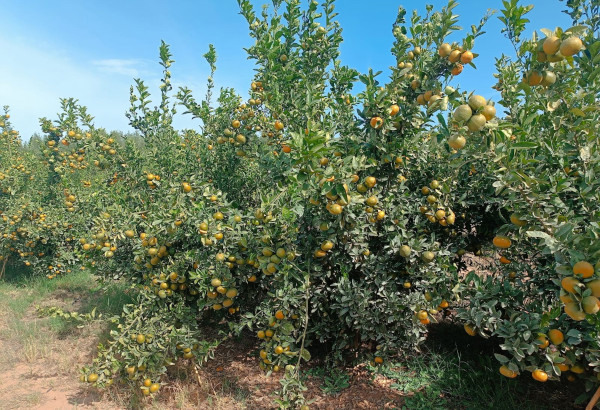Morocco is largely under the threshold of water shortage. Many crops, including Nadorcotts, are marking time but producers remain confident in the solidity of the industry.
Mr. Youssef Maaouni, producer and exporter of Nadorcott in Agafay/Marrakesh, said: "This season, volumes will be lower than expected due to the persistent drought and the chergui (hot and dry wind in southern Morocco). Pits water is not sufficient for all our surfaces. Some producers have managed to absorb the blow without big drops in volume, but others have been forced to irrigate only part of their surface, some of them leaving up to two thirds in a state of survival."

The situation has impacted all regions of the country, especially the region of Marrakech, home to the best quality Nadorcotts in Morocco. Drilling pits comes with some inconveniences. Mr. Maaouni explains: "While I didn't face this problem, some of my peers have had to deal with a certain level of salinity in the pits water."
In the context of global inflation, a drop in the water supply is coupled with a dramatic increase in the production costs. Mr. Maaouni explains: "For example, the price of fertilizer has increased this year from 3 to 18 MAD per kg. Freight prices have been dropping in the last few months, but didn't return to their pre-pandemic level. This could translate into an increased price. We will have more visibility on prices in the coming days".
Moroccan production is facing fierce competition from Egypt. According to Mr. Maaouni: "Our geographical location close to Russia is an advantage for Egyptian producers, but in addition to that, transport is subsidized by the Egyptian government and water is almost free. It is probably true to say we are facing an unfair competition." Morocco's other competitor, Spain, is facing a period of drought and similar conditions to Morocco.
 Despite the grim picture this season, Mr. Maaouni - who has already received orders for his entire production - remains confident: "The Nadorcott industry in Morocco remains solid. We have an extraordinary quality, thanks to a good sun exposure. The yield of Moroccan Nadorcotts is optimal and can reach up to 60-100 tons per hectare."
Despite the grim picture this season, Mr. Maaouni - who has already received orders for his entire production - remains confident: "The Nadorcott industry in Morocco remains solid. We have an extraordinary quality, thanks to a good sun exposure. The yield of Moroccan Nadorcotts is optimal and can reach up to 60-100 tons per hectare."
"The quality of the Moroccan Nadorcott depends on the technicality of the producers, in particular their choice of rootstocks; and of all the regions, Agafay is the most prized and the original home of the variety. We must not forget that the Moroccan Nadorcott is a worldwide success" concludes Mr Maaouni.
For more information:
Mr Youssef Maaouni
Domaines Maaouni
Tel: +212661231934
Email: youssefmaaouni@gmail.com
